The notion of breakfast being the “most important meal of the day” is so deeply ingrained in modern culture that it has become an unquestioned mantra. While a morning meal can certainly set a positive metabolic tone, the reality is that the type of breakfast most people consume is far more likely to be an unintentional dietary landmine than a nutritional launchpad. For those actively managing their weight or health, the mistakes made before 9 AM often sabotage their entire day’s effort, leading to uncontrollable hunger spikes, mood swings, and poor food choices in the afternoon. This isn’t about skipping breakfast entirely; it’s about dissecting the widespread failures in macronutrient composition, timing, and cognitive approach that transform a healthy habit into a source of systemic metabolic chaos. The true sabotage isn’t in what you ate yesterday, but in the repeated, seemingly minor errors you make first thing in the morning.
The Invisibility of Sugar: Disguised Refined Carbohydrates
Many people believe they are choosing a “light” or “healthy” breakfast when, in fact, they are consuming a dose of disguised refined carbohydrates that acts as an immediate drain on their energy and dietary resolve. This mistake often hides in plain sight within products marketed aggressively as health foods: seemingly wholesome granolas, instant oatmeal packets, or even mass-produced breakfast bars. These items, stripped of natural fiber and often loaded with various forms of added sugar, deliver a massive, quick-release glucose surge that the body must rush to counteract.
…disguised refined carbohydrates…
The immediate consequence of this rapid glucose rush is a sharp spike in insulin, followed by an inevitable, dramatic crash roughly two hours later. This metabolic rollercoaster guarantees a feeling of lethargy, brain fog, and, most detrimental to any diet, a powerful rebound hunger that drives poor choices well before lunchtime. A breakfast heavy in these refined carbs essentially pre-programs the body for a cycle of energy highs and lows, making sustainable adherence to a diet virtually impossible once the mid-morning cravings hit their peak intensity.
The Empty Plate: Prioritizing Fiber and Volume
A critical, yet commonly overlooked, mistake is failing to construct a breakfast that prioritizes fiber and physical volume. Fiber, often missing in the quick-fix, processed options, is essential for slowing down digestion, regulating blood sugar levels, and promoting the sensation of fullness, or satiety. A meal consisting of, for example, two slices of white toast and jam, provides calories but lacks the mechanical bulk necessary to signal to the brain that the stomach is truly full.
…failing to construct a breakfast that prioritizes fiber and physical volume.
This deficiency means that while the body has received energy, the digestive system has been processed too quickly, leaving the brain convinced that more food is necessary. By deliberately incorporating sources of high-volume fiber—such as whole-flaxseed meal, a generous serving of mixed berries, or chia seeds—the breakfast physically occupies more space in the stomach and takes longer to break down. This extended digestive process sustains energy release and crucially delays the onset of hunger, providing a solid foundation for successfully managing caloric intake throughout the rest of the morning and into the afternoon.
The Liquid Calorie Trap: Miscalculating Beverages
For many, the first and most egregious calorie mistake of the day is delivered through a straw or a coffee cup. Liquid calories, particularly those consumed in the form of sweetened coffee beverages, commercial fruit smoothies, or even supposedly “pure” fruit juices, are a powerful saboteur of any diet. The body processes calories consumed in liquid form differently; they do not trigger the same strong satiety signals as solid food, meaning an individual can ingest hundreds of calories without registering true fullness.
…liquid calories, particularly those consumed in the form of sweetened coffee beverages, commercial fruit smoothies, or even supposedly “pure” fruit juices…
A large, specialty coffee drink—often containing multiple pumps of flavored syrup, whipped cream, and whole milk—can easily surpass the calorie and sugar content of an entire, well-composed solid meal, yet it fails to reduce subsequent hunger. Similarly, drinking a glass of apple or orange juice, stripped of the original fruit’s fibrous pulp, is essentially the nutritional equivalent of drinking a soft drink. The habitual consumption of these high-sugar liquid bombs is a covert pathway to caloric surplus, entirely undermining the careful portion control being applied to solid meals later in the day.
The Protein Deficit: Neglecting Structural Satiety
Perhaps the most significant and pervasive breakfast error is the profound neglect of adequate protein. The typical Western breakfast—cereal, toast, muffins—is predominantly carbohydrate-based, leaving the body metabolically vulnerable. Protein is the supreme macronutrient for satiety; it requires more energy to digest (a higher thermic effect), and it triggers the release of specific satiety hormones that tell the brain to stop eating.
…the profound neglect of adequate protein.
A breakfast containing a minimum of 20 to 30 grams of high-quality protein—found in sources like eggs, Greek yogurt, or a protein powder—will dramatically alter the hormonal and metabolic response to the meal. Without this necessary structural component, the rapidly digested carbohydrates are quickly metabolized, leading to the rapid blood sugar crash and hunger rebound discussed previously. Investing in a substantial portion of protein at breakfast is not just about nutrition; it’s a strategic move to control appetite and prevent energy dips that otherwise guarantee subsequent dietary indiscretions.
The Timing Tangle: Eating Immediately Upon Waking
The advice to eat breakfast immediately upon waking, largely pushed by vested interests in the breakfast industry, ignores key aspects of the body’s natural hormonal rhythm. Many individuals, especially those who naturally wake early, have a peak in the stress hormone cortisol shortly after rising. Cortisol naturally raises blood glucose levels, preparing the body for the day’s stress. Eating a high-carbohydrate meal during this window can lead to an excessively large and unnecessary blood sugar spike.
…eating immediately upon waking…
Moreover, the feeling of hunger is often not present immediately after waking, and forcing a meal can be metabolically counterproductive. A better approach for many is to delay breakfast by an hour or two, consuming it closer to the time the body’s cortisol and insulin sensitivity normalize, or when true, physiological hunger sets in. This slight delay allows the body to utilize its own stored energy for the initial morning activity and ensures that the ingested food is used efficiently, rather than contributing to an initial, exaggerated blood sugar surge.
The Weekend Overload: Calorie Creep and Dietary Amnesia
Dietary sabotage often escalates dramatically during the weekend, largely due to a psychological phenomenon known as dietary amnesia combined with a massive calorie creep at breakfast. The weekday regimen, often a quick, controlled affair, is abandoned for sprawling, multi-course weekend breakfasts involving pancakes, waffles, multiple servings of pastries, heavy sauces, and excessive servings of fats and sugars.
…a psychological phenomenon known as dietary amnesia combined with a massive calorie creep at breakfast.
A single weekend brunch featuring a stack of syrup-drenched pancakes and bacon can easily contain 1,000 to 1,500 calories, effectively erasing the caloric deficit achieved over several days of disciplined weekday eating. This “cheat meal” mentality, when applied to a large, unconstrained breakfast, introduces enough surplus calories to halt weight loss entirely for the week. Recognizing that nutritional rules do not pause from Friday evening to Monday morning is essential for long-term success, demanding that the core principles of protein and fiber remain a priority even when the pace of life slows down.
The ‘Health Halo’ Illusion: Relying on Misleading Labels
The breakfast aisle of any supermarket is a masterclass in misleading nutritional marketing, creating a powerful “health halo” around products that are fundamentally detrimental to a diet. Buzzwords like “natural,” “organic,” “gluten-free,” or “low-fat” frequently mask a product’s high sugar and refined carbohydrate content. Consumers mistakenly assume that by purchasing an item with one of these labels, they are making a healthy choice, regardless of the actual ingredient list or nutritional panel.
…creating a powerful “health halo” around products that are fundamentally detrimental to a diet.
For instance, many gluten-free granolas compensate for the lack of wheat by loading the product with high-glycemic starches and sweeteners, making them metabolically worse than their conventional counterparts. Similarly, “low-fat” yogurts often contain significantly more sugar to improve flavor. The mistake is not reading the ingredient list: a truly diet-sabotaging breakfast is often one that is pre-packaged and heavily marketed, relying on the consumer’s misplaced trust in the label rather than actual nutritional scrutiny.
Nutritional Inconsistency: Eating the Same Suboptimal Meal
The human body thrives on a degree of nutritional variation, yet many individuals lock into an almost ritualistic consumption of the same suboptimal breakfast day after day. This failure of nutritional inconsistency means that any deficiencies—such as a lack of specific vitamins, micronutrients, or sufficient protein—are compounded daily, creating a persistent, low-level nutritional imbalance that impacts energy, mood, and satiety.
…eating the same suboptimal breakfast day after day.
If the recurring breakfast is a bagel and cream cheese, the body is continually deprived of essential fiber and quality protein, and repeatedly bombarded with simple carbohydrates. Introducing a weekly rotation of breakfast types—switching between a high-protein egg skillet, a fiber-rich Greek yogurt parfait, and a savory cottage cheese bowl—provides a broader spectrum of nutrients. This variation prevents the metabolic stagnation that results from dietary monotony and ensures that the body receives the complete nutrient profile needed to support energy levels and control hunger effectively.
The Mindless Eating Trap: Distraction at the Morning Table
Breakfast is often the most hurried and distracted meal of the day, consumed while scrolling through a phone, watching the morning news, or rushing through preparation for the day. This practice of mindless eating fundamentally compromises the body’s natural satiety mechanisms and is a subtle, yet powerful, means of diet sabotage.
…This practice of mindless eating fundamentally compromises the body’s natural satiety mechanisms…
When attention is diverted from the act of eating, the brain fails to properly register the sensory experience of the food—its texture, aroma, and taste. This cognitive disconnect means that the body is less likely to register the caloric intake and the feeling of fullness, leading to poor memory of the meal and increased likelihood of snacking soon after. Taking even a brief ten minutes to eat slowly and mindfully—focusing entirely on the plate—allows the brain and gut to communicate effectively, ensuring that the meal fulfills its role in satisfying both hunger and psychological need.
Undermining the Morning: Ignoring Contextual Hunger Cues
Finally, a major mistake is the failure to distinguish between habitual hunger and true, physiological hunger, often compounded by ignoring the contextual cues that define the rest of the day. A healthy breakfast must be tailored not just to general nutritional goals, but to the specific energy demands of the subsequent hours. Eating a large, calorie-dense breakfast when the morning will be spent sitting at a desk is a different metabolic proposition than fueling up for a morning of manual labor.
…ignoring the contextual hunger cues.
Many individuals eat because the clock says 8:00 AM, not because their body is signaling a need for fuel. Learning to listen to subtle hunger and satiety signals—and adjusting breakfast portion size and composition accordingly—is a master skill of healthy eating. If you find yourself consistently ravenous at 11:00 AM, the fault lies not in your lack of willpower, but in a breakfast that was compositionally flawed, likely due to a lack of protein and fiber, ensuring a crash and subsequent sabotage of the day’s eating plan.
